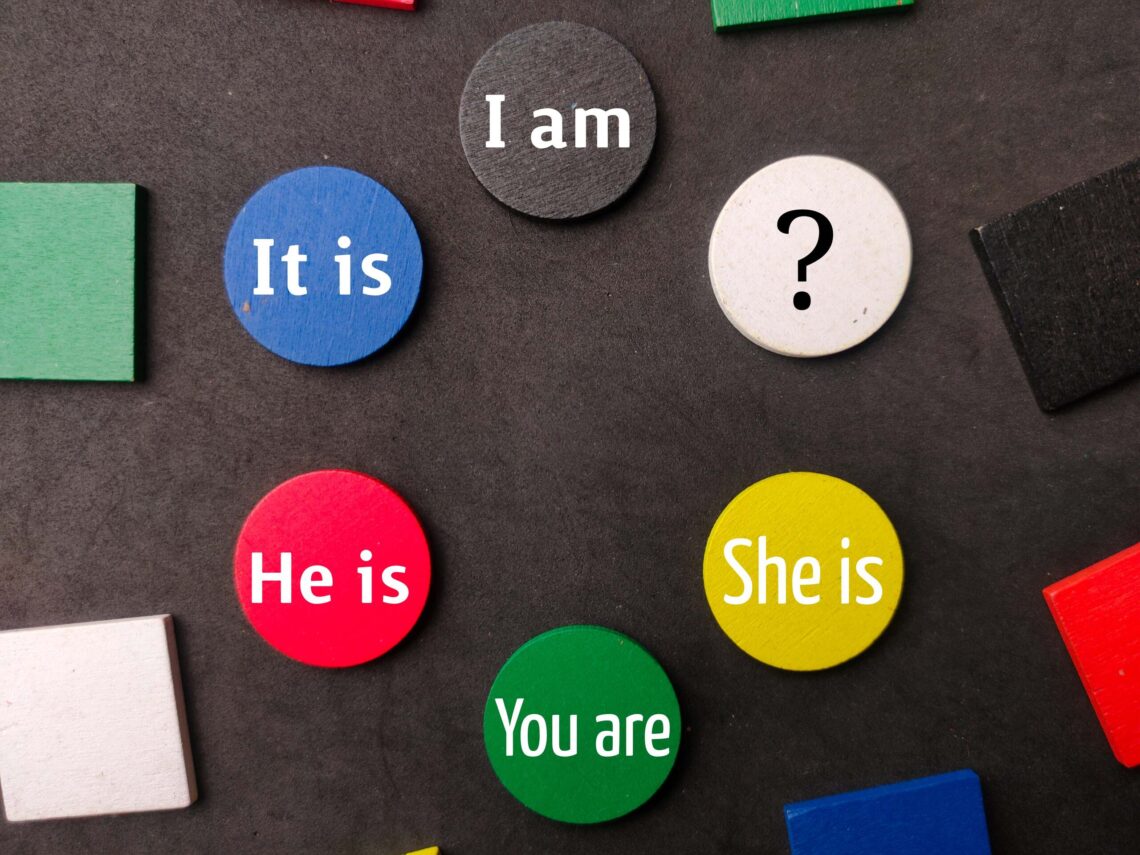
Mastering Verb Tenses: A Key To Clear Communication
Mastering verb tenses is a fundamental aspect of effective communication and language skills. Using the correct verb tense allows us to accurately convey information and express different time frames or ongoing actions. Whether we are discussing past events, describing current situations, or talking about future plans, verb tenses enable us to organize our thoughts and communicate clearly. By understanding and using verb tenses correctly, we can create sentence structures that clearly indicate when actions happened or will happen, making our communication more accurate and understandable.
In this comprehensive guide, we will explore the various verb tenses, including past, present, and future, and provide examples and explanations to help you master their usage. Whether you are a native English speaker looking to refine your language skills or an English learner aiming to improve your communication abilities, this guide will provide you with the knowledge you need to confidently use verb tenses in your everyday conversations and written expressions. So let’s dive in and unlock the power of verb tenses for clear and effective communication.
What is a Verb?
A verb is a word that expresses an action, occurrence, or state of being. It is one of the essential aspects of any sentence structure and plays a crucial role in conveying different time frames and sequences of events in the English language.
Verbs are what give life to sentences, allowing us to describe and communicate what is happening, what has happened, or what will happen. They can represent physical actions, such as “run” or “dance,” or mental actions like “think” or “understand.” Verbs can also express occurrences or events, like “rain” or “appear,” as well as states of being, such as “be” or “exist.”
Understanding verb usage is essential for effective communication as it helps us describe daily routines, ongoing actions, future events, and permanent situations. By mastering verb tenses, including the simple, continuous, perfect, and conditional forms, we can accurately convey the time frame and sequence of events in a sentence.
Incorrect verb tenses can lead to confusion or misunderstandings, especially for English learners or non-native speakers. Therefore, it is essential to learn and practice using the correct verb form in various situations. Online exercises and comprehensive guides are available to help learners improve their language skills and master different verb forms.
Types of Verbs
Verbs are an essential aspect of the English language and mastering their different forms is crucial for effective communication. There are various types of verbs, including regular and irregular verbs.
Regular verbs follow a predictable pattern when conjugated into different tenses. These verbs form their past tense and past participle by adding -ed to the base form. For example, the base form “talk” becomes “talked” in the past tense and “talked” as the past participle. Regular verbs are relatively easy to master as they adhere to a consistent pattern.
On the other hand, irregular verbs do not follow the same pattern as regular verbs when conjugated. They have unique forms for the past tense and past participle. Some examples of irregular verbs are “go” (went, gone), “eat” (ate, eaten), and “break” (broke, broken). It is essential to memorize the irregular verb forms to use them correctly in sentences.
By understanding the distinction between regular and irregular verbs, English learners can enhance their grasp of verb tenses and use them accurately in daily conversations or written communication. Regular verbs provide a reliable reference point for conjugation, while irregular verbs add complexity to verb usage.
To truly master verb tenses, it is important to practice using both regular and irregular verbs in different contexts. Through continuous practice and exposure, learners can become more confident in using the correct verb form and improve their overall language skills.
Simple Tense
Verbs are an important part of the English language, and it is essential to master their different forms in order to communicate clearly and effectively. One of the crucial aspects of verb tenses is understanding and using the simple tense, which includes the present simple, past simple, and future simple tenses.
The present simple tense is formed by using the base form of the verb and can be used to describe habitual actions, general facts, and permanent situations. It may also include the addition of an -s or -es ending for third-person singular subjects. For example, “She works at a hospital” or “They study English every day.”
The past simple tense is used to discuss actions that occurred in the past and are now finished. Irregular verbs have distinct forms for the past tense, while regular verbs are created by adding -ed to the base form. Irregular verbs have unique forms for past tense, while regular verbs are formed by adding -ed to the base form. For example, “He went to the store” or “We played soccer yesterday.”
The future simple tense is used to talk about future events or actions. It is formed by using the auxiliary verb “will” followed by the base form of the verb. For example, “I will go to the party tonight” or “They will finish their project next week.”
Mastering the simple tense is crucial for expressing different time frames and sequences of events accurately. By understanding and using the correct verb forms, English learners can improve their communication skills and convey their ideas more effectively. Regular practice and online exercises can help reinforce the usage of simple tenses and enhance overall language proficiency.
Continuous Tense
The continuous tense, also known as the progressive tense, is used to describe ongoing actions or events at the present, past, or future time. It emphasizes the duration or continuity of the action.
To form the present continuous tense, use “be” followed by the “-ing” form of the main verb. For example, “She is reading” or “They are cooking.”
The past continuous tense is formed by using the past tense of “be” (was, were) followed by the present participle of the main verb. It is used to talk about actions that were in progress at a specific time in the past. For example, “He was watching TV when the phone rang” or “We were playing soccer in the park.”
The future continuous tense shows actions in the future. For example, “I will study for my exam tomorrow” or “They will travel to Europe next month.”
The main difference between the simple and continuous forms is that the simple tense describes general truths or habitual actions, while the continuous tense focuses on ongoing or temporary actions. For example, “I eat breakfast every day” (simple) vs. “I am eating breakfast right now” (continuous).
Knowing how to use verb tenses correctly is crucial for effective English communication. It also helps to avoid confusion or misinterpretation of our intended meaning. Practicing verb tenses through online exercises and studying common tense patterns can significantly improve our language skills and make us proficient English learners.
Perfect Tenses
Perfect tenses are an essential aspect of mastering verb tenses and are crucial for clear communication. They are formed using the auxiliary verb “have” in the appropriate tense, followed by the past participle of the main verb.
The present perfect tense is formed by using “have” or “has” with the past participle of the verb. It is used to express an action that started in the past but has a connection to the present or is still ongoing. For example, “I have visited Paris several times” or “She has studied Spanish for five years.” The present perfect tense is often used to talk about experiences, accomplishments, or actions with an undefined time frame.
The past perfect tense is formed with “had” + past participle and is used to indicate an action that occurred prior to another event in the past. For example, “He had already eaten lunch when we arrived” or “They had finished the project before the deadline.” The past perfect tense helps establish a sequence of events in the past.
The future perfect tense is formed by using “will have” or “shall have” with the past participle of the verb. It is used to express an action that will be completed before a specific time or event in the future. For example, “By next year, I will have graduated from university” or “They shall have finished the renovation by Friday.” The future perfect tense allows us to talk about future events in relation to other future events or time frames.
Mastering the perfect tenses is crucial for effective communication as they enable us to accurately express the relationships between different actions and time frames. By understanding and using these tense forms correctly, English learners can improve their language skills and avoid using incorrect verb tenses in their sentence structures. Online exercises and comprehensive guides can provide a comprehensive overview and practice opportunities for learning and mastering perfect tenses.
Perfect Continuous Tenses
The perfect continuous tenses, also known as the perfect progressive tenses, allow us to talk about ongoing actions or events that started in the past, continued in the present, and are expected to continue in the future. These tenses provide a comprehensive understanding of the duration and progression of an action or event.
The present perfect continuous tense is formed by using “have been” or “has been” with the present participle (verb + -ing). It is frequently utilized to describe an ongoing action or event that started in the past and continues in the present. It is commonly used to describe an ongoing action or event that began in the past and continues in the present. For example, “I have been studying for two hours” or “They have been working on the project all day.” This tense emphasizes the duration and relevance of the action or event to the present moment.
The past perfect continuous tense is formed by using “had been” with the past participle of the verb. It is used to describe an ongoing action or event that started and continued up until another event or time in the past. For example, “She had been playing the piano for three hours when the guests arrived” or “I had been waiting for the bus before it finally arrived.” This tense helps establish the duration and context of the action or event in relation to other past events.
The future perfect continuous tense is formed by using “will have been” or “shall have been” with the present participle of the verb. It is used to describe an ongoing action or event that will be in progress before a specified time or event in the future. For example, “By this time next year, I will have been working at this company for ten years” or “They shall have been traveling for three months by the end of the year.” This tense allows us to discuss the duration and anticipated completion of an action or event in relation to future time frames.
Mastering the perfect continuous tenses is crucial for effective communication as it enables speakers to express ongoing actions, emphasize duration, and establish relationships between past, present, and future events. By understanding and correctly using these tenses, language learners can convey their thoughts and experiences with precision and clarity. Practice and online exercises are helpful tools for English learners to improve their grammar and language skills in using these verb tenses effectively.
Tips for Mastering Verb Tenses
To communicate effectively in English, mastering verb tenses is crucial. Regular practice is key to becoming proficient in using verb tenses. To become proficient in using verb tenses, it’s important to incorporate regular practice into your language learning routine. Regular practice helps you become familiar with the different tense forms and develop a sense of when to use each one.
Understanding time frames and the sequence of events is also crucial when mastering verb tenses. It’s important to know whether an action is happening in the past, present, or future, and how it relates to other events. This knowledge helps you choose the correct tense to accurately convey your intended meaning.
There are several types of tenses in English, including simple, continuous, perfect, and perfect continuous tenses. Simple tenses are used to describe actions in a general sense, while continuous tenses focus on ongoing actions. Perfect tenses highlight the completion of actions before another event, and perfect continuous tenses emphasize an ongoing action that will be completed in the future.
To convey verb tenses accurately, it’s also essential to understand and use auxiliary verbs and modal verbs. Auxiliary verbs help form different tense forms, while modal verbs can add nuances to the meaning of sentences.

Conclusion
In conclusion, mastering verb tenses is an important part of clear communication. By understanding the different tenses, and how they are used in different contexts, you can ensure that your messages are clear and easy to understand. With practice, you can master the art of verb tense usage and become a more effective communicator.





